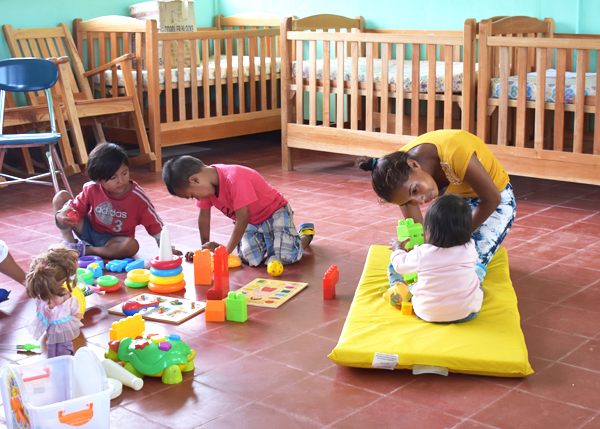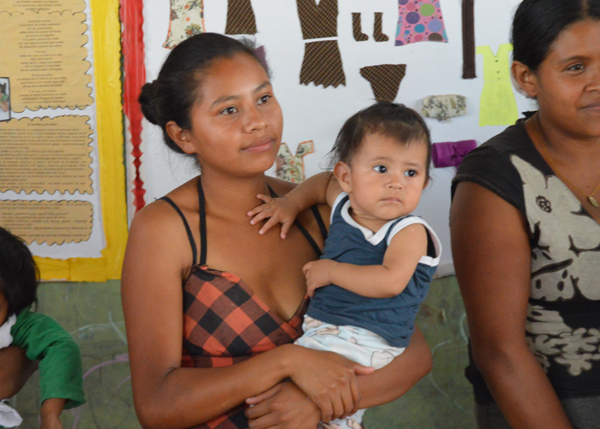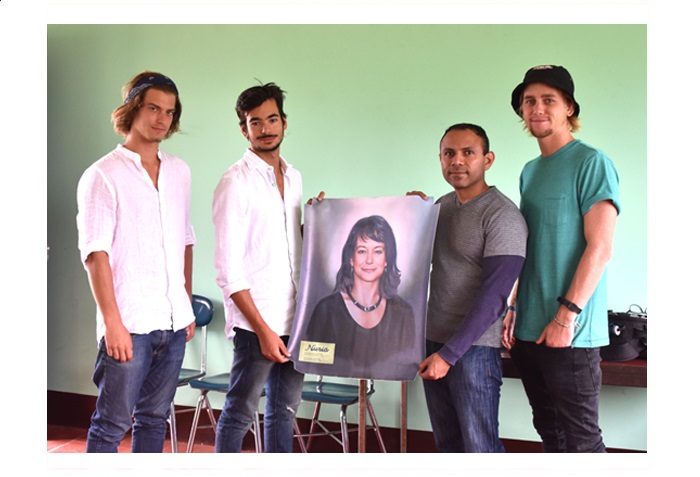A year with the Nuria García Mother-Child Centre
Association Padre Fabretto tells us how the Mother-Child Centre has changed the lives of women and children of Cusmapa, Nicaragua.

“A year ago, we opened our first Mother-Child Center built thanks to the generosity of the Nuria Garcia Foundation. The Nuria García Center, located in San Jose de Cusmapa, one of the most desolate parts of the northern region of Nicaragua, has changed the lives of hundreds of women and children who go there every day.
In a country where 25% of pregnant women are teenagers, a statistic that increases to 30% in rural areas, early stimulation programs can guarantee the health of both mother and child. The main causes of these high rates of teenage pregnancy are poverty and poor quality education.
For this reason, the Nuria Garcia Center has focused its efforts on improving maternal and child care throughout the area, as well as the education of these young mothers.

What have we achieved this year? What has changed?
-
The center has benefited around 70 children under 5 with severe health problems, chronic malnutrition, respiratory problems and anemia, among others, with personalized attention, providing medicine, food packages, vitamins and nutritional follow-up.
-
More than 60 women and children have benefited from the Nuria Garcia Center’s early stimulation sessions. The center has the space, environment, and adequate resources to perform the exercises, techniques, and therapies that are crucial to the program. In these workshops, led by Fabretto personnel specialized in early stimulation, innovative methodologies are promoted for infants, preparing them for preschool.
-
Prenatal stimulation has been provided to pregnant mothers. This can determine the health and development of the baby for life. In these sessions, mothers learn exercises and techniques that help them reduce the risk of complications during childbirth and stimulate the baby’s emotional, physical and intellectual development.
-
The Nuria García Center also offers psychological care, physiotherapy, and serves as a meeting place for community gatherings. The center guarantees the privacy of women. Before, there was no adequate infrastructure to treat women in private spaces, so many women would not come out of shame.
-
Looking ahead to 2017, the center is working on putting together a group of young students to lead awareness activities, training in sexuality and values, and to offer training to various community groups.
Gladys, a teacher and early learning community leader shares with us that “here, not only do mothers receive training and support in early stimulation, but are also offered a space for reflection where they can be heard, receive advice, and even laugh together.” Workshops like these undoubtedly empower rural women and promote progress in remote communities.”
fundacionng
2020-11-12T11:55:37+00:00
Las cookies son importantes para ti, influyen en la experiencia de navegación, nos ayudan a proteger tu privacidad y permiten realizar las peticiones a través de la web.
Si consientes su instalación pulsa "Aceptar", también puedes configurar tus preferencias. Más información en Política de cookies
Opciones Aceptar Cookies



